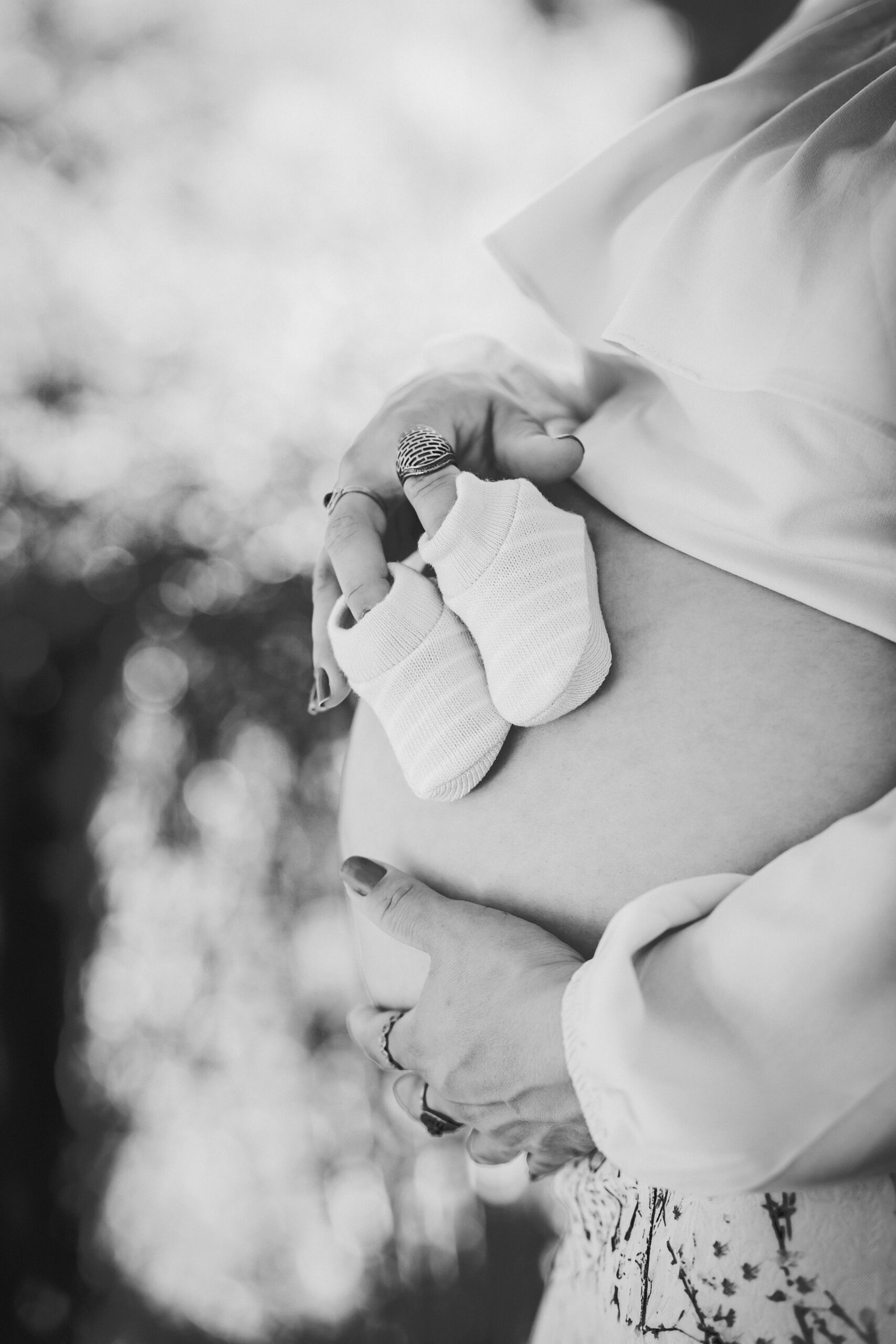As your pregnancy progresses and you move into your second trimester, you may start to experience a lower tummy tugging sensation with movement or burning sensation in your labia (the outer lips of the vulva). Typically, this discomfort is caused by your round ligaments being stretched and can vary between mildly uncomfortable to a sharp pain that spans from your lower belly to groin.
Your round ligaments are a key support for your uterus, spanning from each side of your uterus down to your pelvis. As your baby grows, tension is increased on the ligaments as they stretch. Activities that cause an up and down motion on your belly (such as running or walking) or fast movement to the side or raising upright can result in the ligament pain, especially during your baby’s growth spurts.
Round ligament pain is common during pregnancy, especially in later pregnancy, but there are ways to ease the discomfort and reduce the amount and frequency of pain. Keep in mind that if you experience abdominal pain that doesn’t ease with rest, is sustained, or becomes increasingly severe, contact your healthcare provider.
Tips for easing round ligament pain:
- A warm bath can help ease soreness and tension on the ligaments.
- Use your hands under your belly to manually lift your belly up and support it. This will take pressure off the round ligament.
- Ask your doctor about whether you can take acetaminophen if the pain makes normal, day to day activity difficult.
- Slow down and avoid sudden movements. Over time you’ll become aware of the type of movements that increase round ligament pain and try avoiding them.
- Try and flex your hips by sitting in a chair or bending forward whenever you cough, sneeze, or laugh. Bending at the hip helps to ease the tension on the ligaments.
- Wear a belly support band while exercising or other weight-bearing activities. The band helps take tension off your round ligaments and reduce pain. Look for a band that’s made of a breathable, stretchy fabric, with secure front Velcro closure. It should be wide enough to support your lower tummy but allow for comfortable movement.
- For the best fit:
- Wrap it around your low back and bring the ends to the front so they meet just below your belly button.
- Before you fasten the band, take a breath in and draw your tummy up as you fasten the band, so it’s gently supporting your belly.
- The band should feel supportive but not impede movement or make it hard for you to take a deep breath.
- Frequently check the band during exercise and reposition if it feels loose.
- For the best fit:
- Although exercise may bring on round ligament pain, it’s important to keep moving. Try modifying your fitness routine by taking breaks when you start feeling ligament pain, wearing a belly support band, or reducing your running or walking pace and distance until the pain resolves. If you continue to have pain with weight-bearing exercise, consider switching to non-weight-bearing exercise such as stationary biking or swimming.
References
Chaudhry, S. R., & Chaudhry, K. (2018, December 15). Anatomy, abdomen and pelvis, uterus round ligament
https://www.ncbi.nlm.nih.gov/books/NBK499970/Tobah, Y. B. (2018, April 18). What causes round ligament pain during pregnancy?
https://www.mayoclinic.org/healthy-lifestyle/pregnancy-week-by-week/expert-answers/round-ligament-pain/faq-20380879h
© WKU {2022} All rights reserved.
